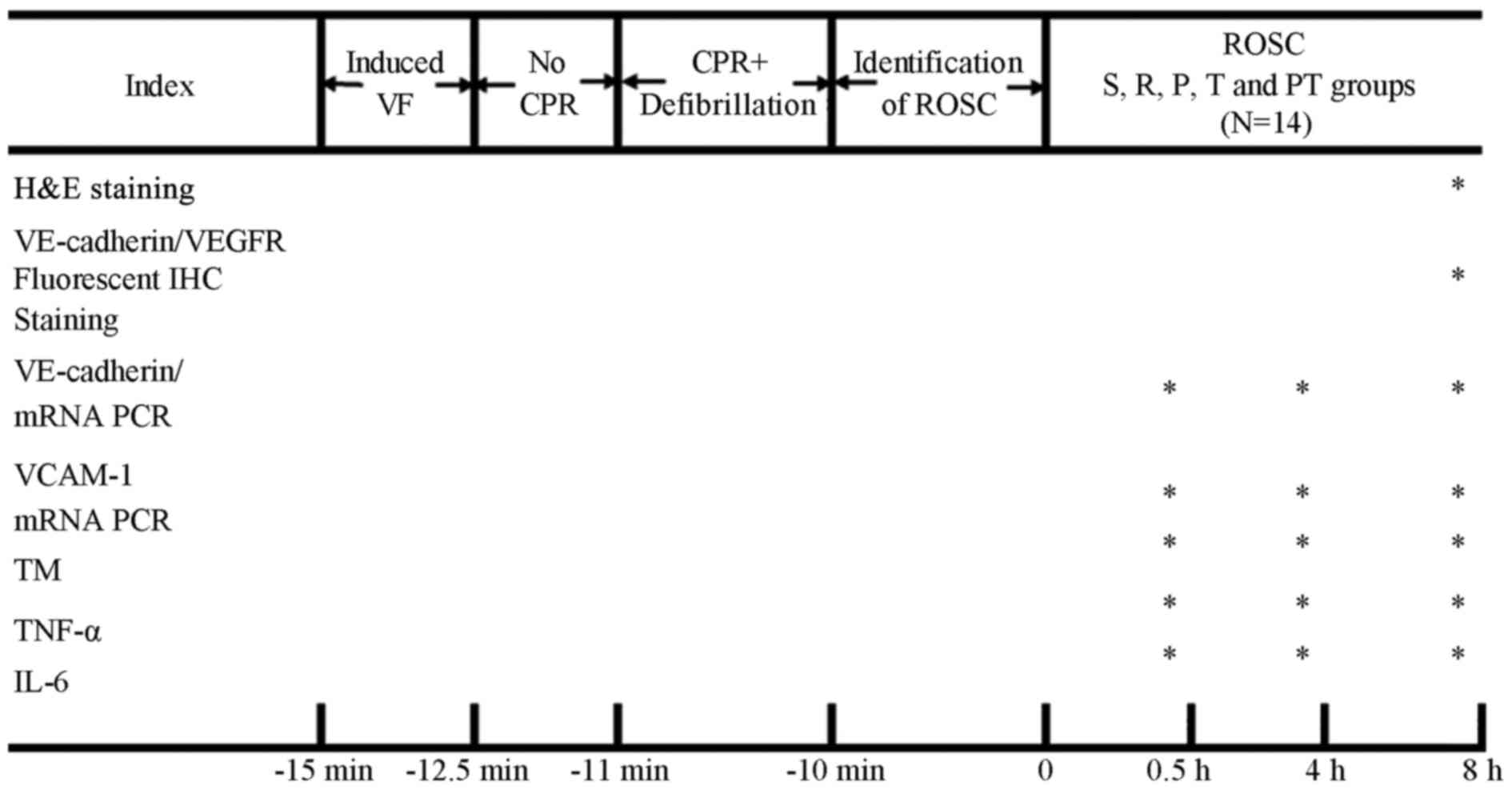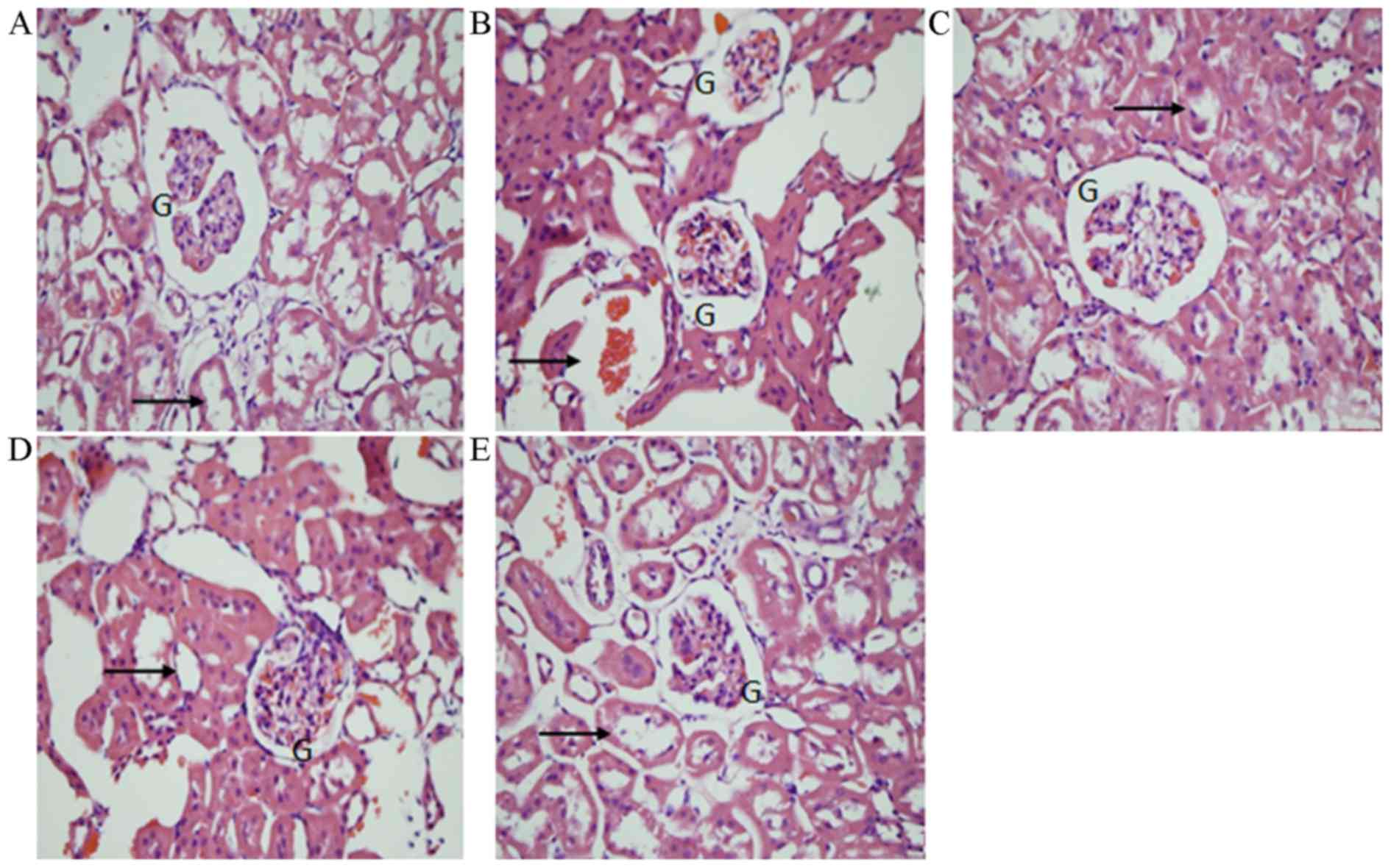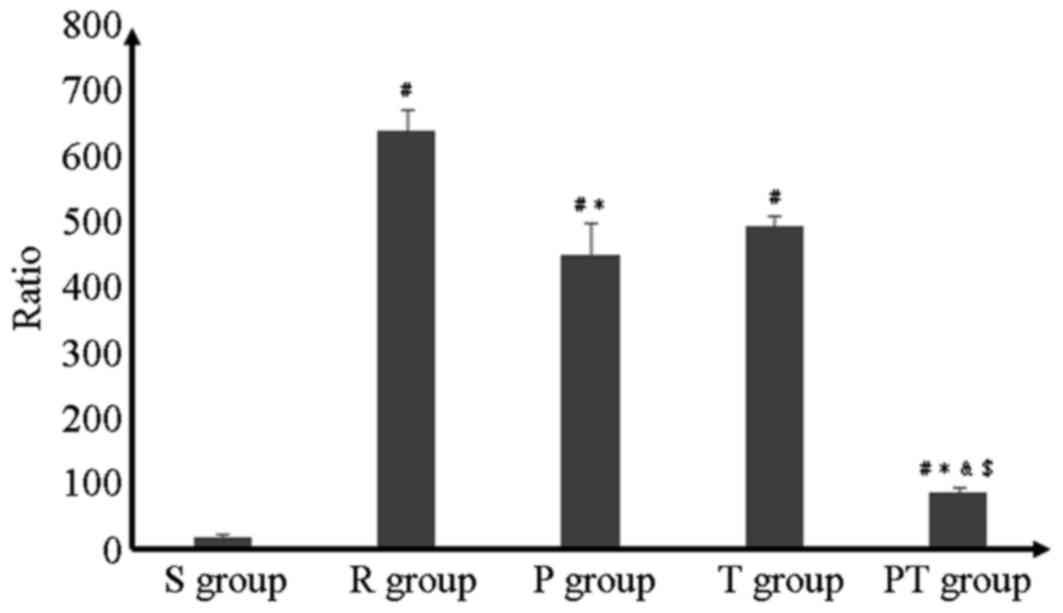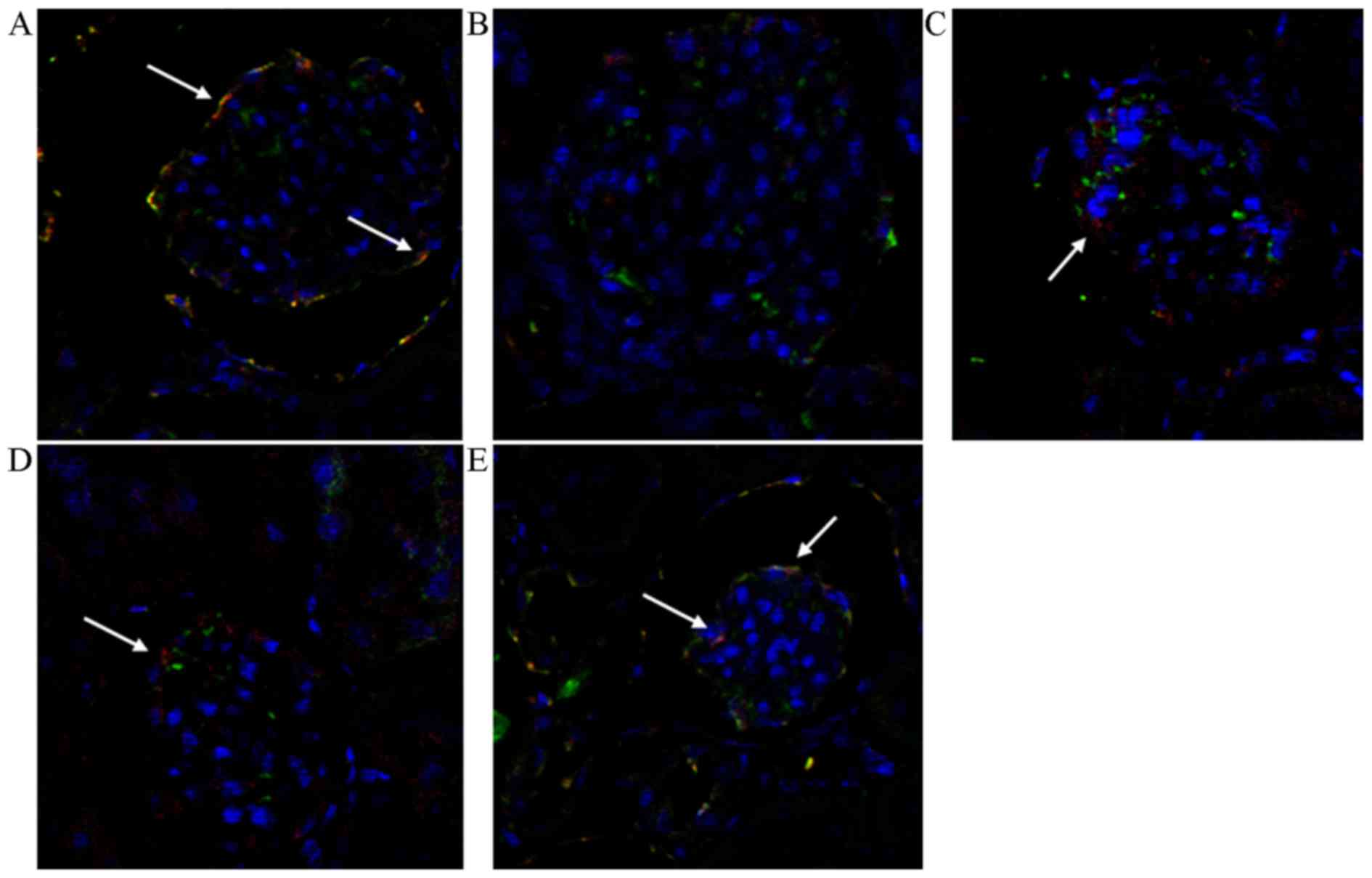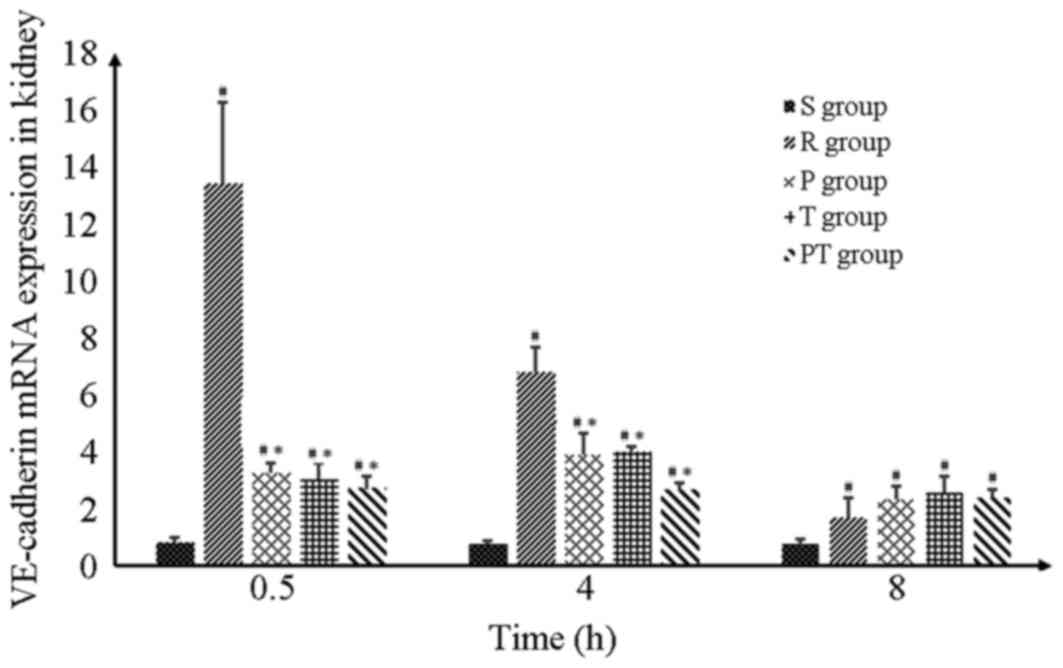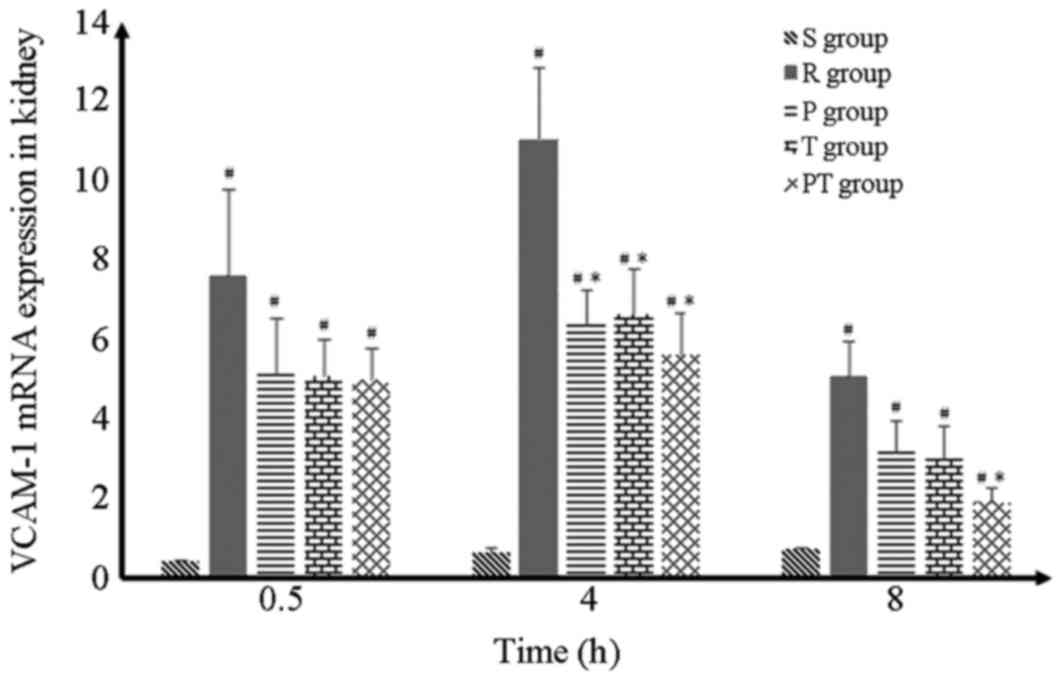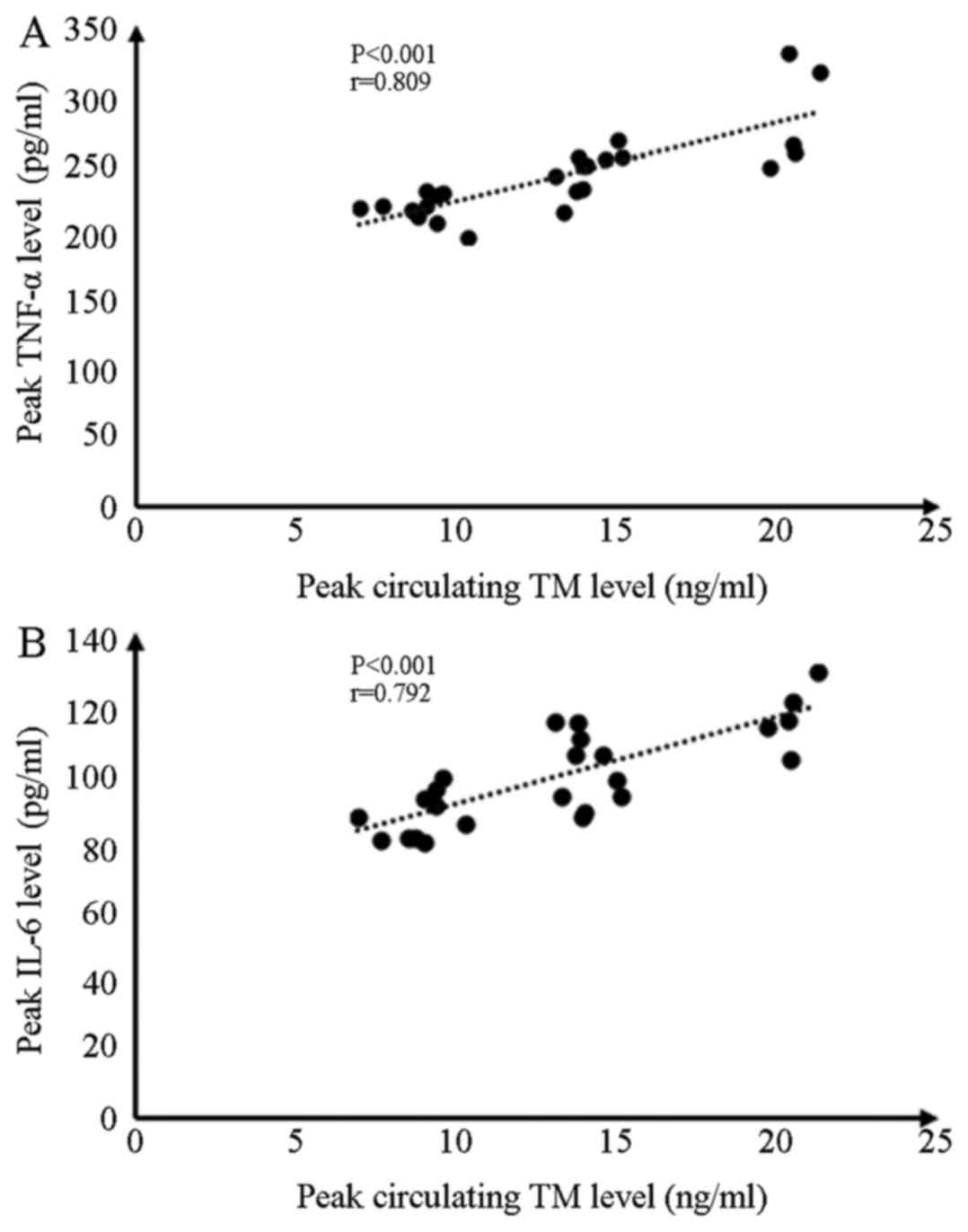|
1
|
Roberts BW and Trzeciak S: Systemic
inflammatory response after cardiac arrest: Potential target for
therapy? Crit Care Med. 43:1336–1337. 2015. View Article : Google Scholar
|
|
2
|
Adams JA: Endothelium and cardiopulmonary
resuscitation. Crit Care Med. 34(12 Suppl): S458–S465. 2006.
View Article : Google Scholar
|
|
3
|
Adrie C, Laurent I, Monchi M, Cariou A,
Dhainaou JF and Spaulding C: Post resuscitation disease after
cardiac arrest: A sepsis-like syndrome? Curr Opin Crit Care.
10:208–212. 2004. View Article : Google Scholar
|
|
4
|
Soares BL, Freitas MA, Montero EF, Pitta
GB and Miranda F Jr: Alprostadil attenuates inflammatory aspects
and leucocytes adhesion on renal ischemia and reperfusion injury in
rats. Acta Cir Bras. 29 Suppl 2:S55–S60. 2014. View Article : Google Scholar
|
|
5
|
Vargas AV, Krishnamurthi V, Masih R,
Robinson AV and Schulak JA: Prostaglandin E1 attenuation of
ischemic renal reperfusion in the rat. J Am Coll Surg. 180:713–717.
1995.
|
|
6
|
Gupta PC, Matsushita M, Oda K, Nishikimi
N, Sakurai T and Nimura Y: Attenuation of renal
ischemia-reperfusion injury in rats by allopurinol and
prostaglandin E1. Eur Surg Res. 30:102–107. 1998. View Article : Google Scholar
|
|
7
|
Huk I, Brovkovych V, Nanobashvili J,
Neumayer C, Polterauer P, Prager M, Patton S and Malinski T:
Prostaglandin E1 reduces ischemia/reperfusion injury by normalizing
nitric oxide and superoxide release. Shock. 14:234–242. 2000.
View Article : Google Scholar
|
|
8
|
Hong JP, Chung YK and Chung SH: The effect
of prostaglandin E1 versus ischemia-reperfusion injury of
musculocutaneous flaps. Ann Plast Surg. 47:316–321. 2001.
View Article : Google Scholar
|
|
9
|
Callaway CW, Donnino MW, Fink EL, Geocadin
RG, Golan E, Kern KB, Leary M, Meurer WJ, Peberdy MA, Thompson TM
and Zimmerman JL: Part 8: Post-cardiac arrest care: 2015 American
Heart Association Guidelines Update for Cardiopulmonary
Resuscitation and Emergency Cardiovascular Care. Circulation.
132(18 Suppl 2): S465–S482. 2015. View Article : Google Scholar :
|
|
10
|
Fries M, Stoppe C, Brücken D, Rossaint R
and Kuhlen R: Influence of mild therapeutic hypothermia on the
inflammatory response after successful resuscitation from cardiac
arrest. J Crit Care. 24:453–457. 2009. View Article : Google Scholar
|
|
11
|
Bisschops LL, van der Hoeven JG, Mollnes
TE and Hoedemaekers CW: Seventy-two h of mild hypothermia after
cardiac arrest is associated with a lowered inflammatory response
during rewarming in a prospective observational study. Crit Care.
18:5462014. View Article : Google Scholar :
|
|
12
|
Bro-Jeppesen J, Kjaergaard J, Wanscher M,
Nielsen N, Friberg H, Bjerre M and Hassager C: Systemic
inflammatory response and potential prognostic implications after
out-of-hospital cardiac arrest: A sub-study of the target
temperature management trial. Crit Care Med. 43:1223–1232. 2015.
View Article : Google Scholar
|
|
13
|
Chen MH, Liu TW, Xie L, Song FQ, He T,
Zeng ZY and Mo SR: Ventricular fibrillation induced by
transoesophageal cardiac pacing: A new model of cardiac arrest in
rats. Resuscitation. 74:546–551. 2007. View Article : Google Scholar
|
|
14
|
Zhou J, Huang GQ, Li XM and Li XG: Effects
of different stimulating parameters and their various combinations
on transoesophageal electrical stululation induced cardiac arrest
in rats. China J Emergency Resuscitaion and Disaster Med.
8:596–598. 2013.
|
|
15
|
Idris AH, Becker LB, Ornato JP, Hedges JR,
Bircher NG, Chandra NC, Cummins RO, Dick W, Ebmeyer U, Halperin HR,
et al: Utstein-style guidelines for uniform reporting of laboratory
CPR research. Resuscitation. 33:69–84. 1996. View Article : Google Scholar
|
|
16
|
Cardiff RD, Miller CH and Munn RJ: Manual
hematoxylin and eosin staining of mouse tissue sections. Cold
Spring Harb Protoc. 2:665–668. 2014.
|
|
17
|
Pallor MS, Hoidal JR and Ferris TF: Oxygen
free radicals in ischemic acute renal failure in the rat. J Clin
Inves. 74:1156–1164. 1984. View Article : Google Scholar
|
|
18
|
Garvard J and Gutkind JS: VEGF controls
endothelial permeability by promoting the beta-arrestin-dependent
endocytosis of VE-cadherin. Nat Cell Biol. 8:1223–1234. 2006.
View Article : Google Scholar
|
|
19
|
Tujjar O, Mineo G, Dell'Anna A,
Poyatos-Robles B, Donadello K, Scolletta S, Vincent JL and Taccone
FS: Acute kidney injury after cardiac arrest. Critical Care.
19:1692015. View Article : Google Scholar :
|
|
20
|
Yanta J, Guyette FX, Doshi AA, Callaway CW
and Rittenberger JC: Post Cardiac Arrest Service: Renal dysfunction
is common following resuscitation from out-of-hospital cardiac
arrest. Resuscitation. 84:1371–1374. 2013. View Article : Google Scholar
|
|
21
|
Geri G, Guillemet L, Dumas F, Charpentier
J, Antona M, Lemiale V, Bougouin W, Lamhaut L, Mira JP, Vinsonneau
C and Cariou A: Acute kidney injury after out-of-hospital cardiac
arrest: Risk factors and prognosis in a large cohort. Intensive
Care Med. 41:1273–1280. 2015. View Article : Google Scholar
|
|
22
|
Hasper D, von Haehling S, Storm C, Jörres
A and Schefold JC: Changes in serum creatinine in the first 24 h
after cardiac arrest indicate prognosis: An observational cohort
study. Crit Care. 13:R1682009. View
Article : Google Scholar :
|
|
23
|
Huet O, Dupic L, Batteux F, Matar C, Conti
M, Chereau C, Lemiale V, Harrois A, Mira JP, Vicaut E, et al:
Postresuscitation syndrome: Potential role of hydroxyl
radical-induced endothelial cell damage. Crit Care Med.
39:1712–1720. 2011. View Article : Google Scholar
|
|
24
|
Adrie C, Adib-Conquy M, Laurent I, Monchi
M, Vinsonneau C, Fitting C, Fraisse F, Dinh-Xuan AT, Carli P,
Spaulding C, et al: Successful cardiopulmonary resuscitation after
cardiac arrest as a ‘sepsis-like’ syndrome. Circulation.
106:562–568. 2002. View Article : Google Scholar
|
|
25
|
Scolletta S, Donadello K, Santonocito C,
Franchi F and Taccone FS: Biomarkers as predictors of outcome after
cardiac arrest. Expert Rev Clin Pharmacol. 5:687–699. 2012.
View Article : Google Scholar
|
|
26
|
Samborska-Sablik A, Sablik Z and Gaszynski
W: The role of the immuno-inflammatory response in patients after
cardiac arrest. Arch Med Sci. 7:619–626. 2011. View Article : Google Scholar :
|
|
27
|
Conway EM: Thrombomodulin and its role in
inflammation. Semin Immunopathol. 34:107–125. 2012. View Article : Google Scholar
|
|
28
|
Vargas AV, Krishnamurthi V, Masih R,
Robinson AV and Schulak JA: Prostaglandin E1 attenuation of
ischemic renal reperfusion injury in the rat. J Am Coll Surg.
180:713–717. 1995.
|
|
29
|
Kawamura T, Nara N, Kadosaki M, Inada K
and Endo S: Prostaglandin E1 reduces myocardial reperfusion injury
by inhibiting proinflammatory cytokines production during cardiac
surgery. Crit Care Med. 28:2201–2208. 2000. View Article : Google Scholar
|
|
30
|
Soares BL, Freitas MA, Montero EF, Pitta
GB and Miranda F Jr: Alprostadil attenuates inflammatory aspects
and leucocytes adhesion on renal ischemia and reperfusion injury in
rats. Acta Cir Bras. 29 Suppl 2:S55–S60. 2014. View Article : Google Scholar
|
|
31
|
Chen F, Kondo N, Sonobe M, Fujinaga T,
Wada H and Bando T: Expression of endothelial cell-specific
adhesion molecules in lungs after cardiac arrest. Interact
Cardiovasc Thorac Surg. 7:437–440. 2008. View Article : Google Scholar
|
|
32
|
Hypothermia after Cardiac Arrest Study
Group, . Mild therapeutic hypothermia to improve the neurologic
outcome after cardiac arrest. N Engl J Med. 346:549–556. 2002.
View Article : Google Scholar
|
|
33
|
Bernard SA, Gray TW, Buist MD, Jones BM,
Silvester W, Gutteridge G and Smith K: Treatment of comatose
survivors of out-of-hospital cardiac arrest with induced
hypothermia. N Engl J Med. 346:557–563. 2002. View Article : Google Scholar
|
|
34
|
Bro-Jeppesen J, Kjaergaard J, Wanscher M,
Nielsen N, Friberg H, Bjerre M and Hassager C: The inflammatory
response after out-of-hospital cardiac arrest is not modified by
targeted temperature management at 33°C or 36°C. Resuscitation.
85:1480–1487. 2014. View Article : Google Scholar
|
|
35
|
Zhou J and Poloyac SM: The effect of
therapeutic hypothermia on drug metabolism and drug response:
Cellular mechanisms to organ function. Expert Opin Drug Metab
Toxicol. 7:803–816. 2011. View Article : Google Scholar :
|



